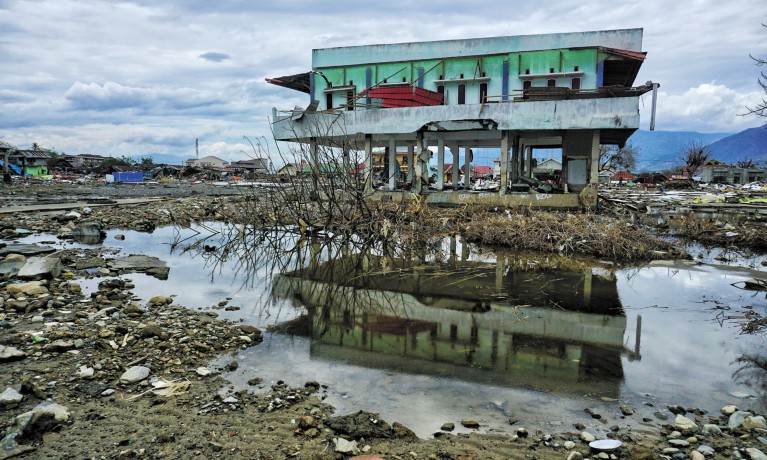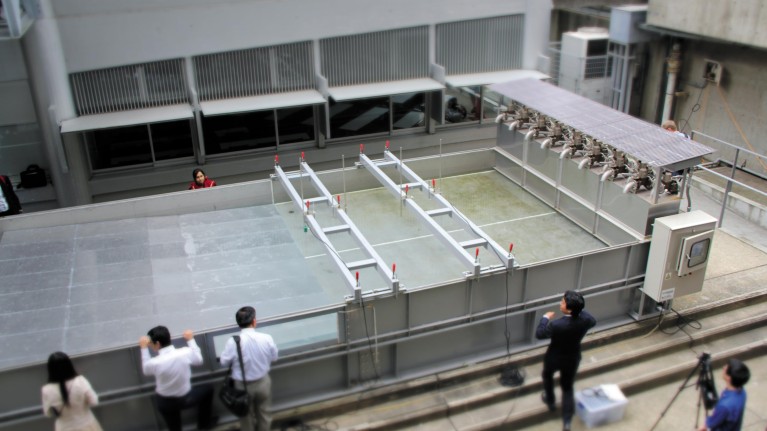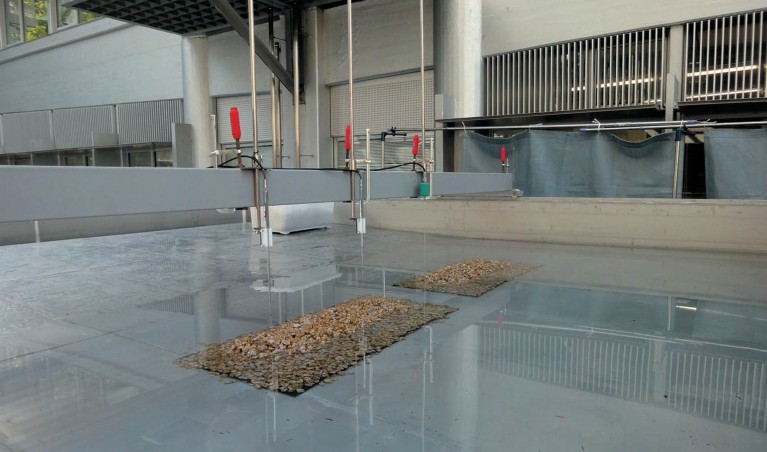The future of many coastal megacities depends upon reliable disaster prediction, protection and prevention strategies as global warming is projected to bring stronger storms, risking millions of lives.

Palu, Sulawesi in Indonesia experienced widespread damage after a tsunami and earthquake in 2018.©Dhody wachyudi/Shutterstock
On 11 March 2011, the devastating Tohoku tsunami was triggered by an earthquake off Japan, killing more than 15,000 people. Japan experiences more earthquakes than anywhere in the world, but catastrophic tsunamis and storm surges are a global problem; from the 2004 Indian Ocean tsunami, to Typhoon Haiyan that struck the Philippines in 2013.
After the 2011 catastrophic tsunami, Waseda University established the Center for Research on Reconstruction from the Great East Japan Earthquake and called for research proposals for on reconstruction of affected areas.
Professor Tomoya Shibayama from the Faculty of Science and Engineering, led a project on infrastructure restoration and disaster management systems that focussed on tsunami responses to support design of new towns and fishing villages at affected sites.
Beyond the science of tsunamis, Shibayama has helped transform Waseda into a base for studying natural hazards, from storms surges to volcanic eruptions.

Waseda’s tsunami wave generator enables researchers to conduct 3D experiments.
Shibayama, when he joined Waseda in 2009, brought 30 years of experience in coastal disaster research. By sharing worldwide his team’s discoveries and damage limitation strategies, he aims to help prevent future disasters. His team’s work benefits from the university’s commitment to tackle global problems through investing in cutting-edge techniques, he says.
Between 2013 and 2018, Shibayama’s team attracted additional funding from the Ministry of Education, Culture, Sports, Science and Technology (MEXT) that supercharged their coastal protection research. “Through international collaboration, we created new simulation models, conducted field surveys, and developed new laboratory techniques,” he explains. The laboratory at Waseda includes a tsunami-storm surge basin, and a wave flume with controllable wave generators. “We have advanced apparatus for measuring water velocity and pressure fields of tsunamis, storm surges, and wind-driven waves,” says Shibayama.
As ocean temperatures rise due to global warming, coastal cities need to understand changing storm behaviour to assess existing defences. A team led by Shibayama’s doctoral student, Ryota Nakamura, now an associate professor at Niigata University, used atmospheric and ocean models developed at Waseda to simulate typhoons off mainland Japan — and the resultant height of storm surges in Tokyo Bay — under future climate scenarios. The study revealed the need to raise current sea walls and dykes to protect Tokyo from future higher, more powerful storm surges.
Lessons of other shores
In 2018, Shibayama and an international team conducted field surveys in Palu Bay in Indonesia, a month after a major tsunami, to assess causes of damage to the coastal communities.
“Before visiting, we collected satellite images and YouTube footage,” says Shibayama. “Once there, we measured the distribution of the maximum tsunami flood height and used a drone to take images. We mapped the bottom of Palu Bay and located landslides that contributed to the tsunami.”
Their observations, published in Pure and Applied Geophysics in 2019, revealed the earthquake triggered perilous mudslides and the narrow bay reflected and superimposed waves to increase the height of the tsunami, which landed several metres higher than expected. The Sulawesi earthquake killed more than 4,000 people and highlighted the importance of emergency preparation and communication.
Shibayama has helped 24 international PhD students, many of whom returned to their home countries to share their expertise. Rafael Aranguiz, now an associate professor at Universidad Católica de la Santísima Concepción, studied tsunami disasters in his home country of Chile. The findings from his doctorate at Waseda enabled him to propose suitable defences on the Chilean coast.
Human Behaviour
In 2018, a study by Waseda researchers of human behaviour on the death toll modelled the tsunami evacuation by locals, tourists and people on Yuigahama beach in Kamakura, Japan.

Detached breakwaters are installed in the tsunami basin to stop intrusion of a tsunami.
The researchers simulated seven tsunami flood events caused by different types of earthquake to estimate the casualties under various evacuation scenarios. Providing information and routes to safe places proved particularly useful. Simply rushing to higher ground, which most people do instinctively, was insufficient to save lives. “Local residents know the area and if they give instructions to tourists, we can improve evacuation procedures and therefore survival,” adds Shibayama, who advises the Kanagawa government about tsunami and storm surge prediction.
Future coasts
Shibayama hopes his research, including a 2020 paper in the Coastal Engineering Journal, helps Japan better prepare for disaster. “We expect rising storm surge heights with global warming,“ he says, “and we will improve coastal protection structures accordingly. Yet, we expect residential areas will need to shift as coastal threats increase.”
International collaborations underpin Waseda research, and Shibayama, with the University of Ottawa is studying the Arctic Ocean, where disappearing sea ice could increase high wind waves, exacerbating coastal erosion. “Methods developed at Waseda, helps us understand this drastic change in the disaster environment,” he says.



 Collection: Nature Index 2021 Asia Pacific
Collection: Nature Index 2021 Asia Pacific